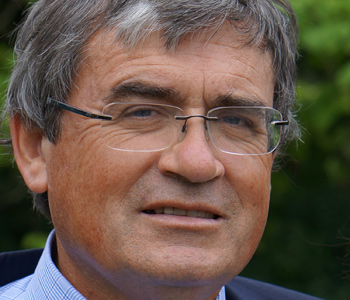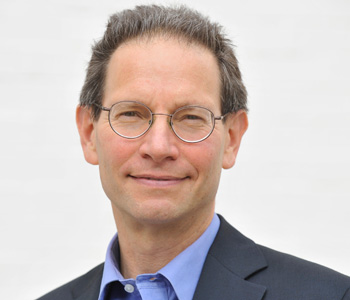Iftikhar Dadi
Modernism and the Art of Muslim South Asia
University of North Carolina Press
360 pages, 6 1/2 x 9 1/2 inches
ISBN 978 0807833582
My study looks at the emergence of modern art among Muslim South Asian artists by examining in some detail the work and intellectual concerns of a select number of artists from the 1920s to the present. These artists are usually associated with Pakistan, but I situate them within a narrative of transnational Muslim South Asian modernism, rather than viewing them within a national art history. The book looks at the development of art with respect to issues of “tradition,” “Islamic art,” and “modernism” during the era of decolonization to the present.
The idea of tradition embraces intellectual and cultural resources of the Persianate cosmopolitan world of the Mughal Empire since the sixteenth century. It also encompasses the reformist movements allied with the rise of print culture that flourished in the wake of the Indian Mutiny of 1857, and sought to shape Muslim life in India by religious and educational reform, and by modernization of Urdu language and literature. “Tradition” further included the rise of progressive cultural politics in South Asia during the 1930s, and the growth of literary journals and criticism. Urdu poetry and literature further provided many of the artists with imaginative tropes. Tradition also partially encompassed the rich iconography of Hindu and Buddhist South Asia.
“Islamic art” was clearly a key facet of tradition the artists wrestled with. The term usually refers to artistic practices over a specific geographic area before the advent of modernity. But this definition is not indigenous to Muslim intellectual history; it is a categorization that developed in nineteenth- and twentieth-century European orientalist art-historical scholarship. The term is clearly catachrestic, referring neither to purely religious art, nor to art made exclusively by Muslims, while excluding art made by Muslims in the modern era and also in major regions such as Southeast Asia.
The artists in my study “decolonized” “Islamic art via their artistic practice, by selectively reworking threads and fragments of classical Islamic art into modern formulations. “Islamic art” was available to these artists as received and lived practice in some cases, but as a result of modern scholarship, it was also furnished to them in discursive articulations. Beginning in the 1920s, artists reworked fundamental categories that characterize the study of classical Islamic arts—architecture, miniature painting, ornament, and calligraphy—via the formal and procedural openings afforded by transnational modernism.
It must be reiterated that modernism itself drew upon artistic practices of the non-West, in which “Islamic art,” the decorative arts, and primitivism in general have played a foundational role—these crossed paths complicate questions of originality and derivativeness by defying any simple ascription of linear causality and temporality.
The artists’ work in my study also needs to be set in relation to the larger rubric of decolonization, as it made a certain type of claim to a “national” art.
However, the “national” in modern Muslim South Asia since the late nineteenth century is a highly fragmented and overdetermined concept that cannot be neatly captured in a concise definition. The later nineteenth century witnessed the growing awareness by Muslim intelligentsia of their minority status in India, and led to the rise of Muslim identity in relation to wider pan-Islamic ideas.
Artistic practice therefore adopted a studied distance from Pakistani nationalism, and largely eschewed direct identification with it. Even in cases when the artist was patronized by the state, the addressee of the artwork was hardly ever the nation in a simple sense. Rather, artists availed of the opening towards reflexivity and articulation of an alternative aesthetic universe offered by modernism, and simultaneously also investigated transnational cosmopolitanism modalities in early modern and modern South Asian Muslim culture. It is striking that all the artists I study also devoted considerable efforts to establish new institutions, by publishing journals, creating exhibition spaces, teaching, and running art foundations.
One needs to underscore the powerfully affirmative potential of modernism itself in fostering new imaginations during the decolonizing era. Modernism needs to be understood to reference cultural production that is experimental and reflexive, inhabits new patronage arrangements, seeks new audiences and venues, and is generally concerned with exploring the predicament of the subject in modernity by drawing on a ruined tradition. The artists I have examined in my study undertake that project, and they do so not primarily as “national” figures but as participants in a framework of a networked, cosmopolitan imaginary. In this sense, the book marks a partial break with the model of national art histories.
I wrote this book keeping in mind a number of audiences. Scholars of modernism who remain narrow in their scope and clearly need to understand it in a genuinely global context, researchers in South Asia area studies who ought to incorporate cultural and artists developments much more in their analysis, students of Islamic Art who are perplexed when dealing with its encounter with modernity, and young artists from South Asia who do not understand their own history very well. I have tried to avoid jargon and to provide enough of a context so that readers unfamiliar with the region and its history will find it useful.
Most of the artists I discuss are still largely unknown in the West, so part of the challenge has been to write in a manner that explicates their life and work without simplistic reduction.
At one level, this book is simply an intellectual history of the emergence of modernism in the art of Pakistan and South Asia during the twentieth century. But I begin with arguing that terms such as “art” and “modernism” are far from simple, and do not have stable meanings. The book thus also forays into a number of theoretical and postcolonial concerns that have broader relevance for the study of modern art in much of the world.
One issue is that modern art still commonly refers to a rather narrow range of meaning and scope. It basically focuses on developments in Paris (Impressionism etc.) in the nineteenth century, and to selected Euro-American movements in the twentieth century (Cubism, Abstract Expressionism etc). But if we understand modernity as a socially transformative condition that was in force across much of the world from the nineteenth century on, how are we to understand artistic practices that were associated with these momentous changes?
Another problem confronting the study of modernism is that of the universal versus the particular, which is mapped onto temporal change versus geographic particularity. Cubism for example, is understood as a “universal” movement that decisively altered the trajectory of modernism. But if one begins to look at what happened in specific geographic areas, such as parts of Asia or Africa, the impulse so far has been to write delimited studies of “national” or regional art histories.
Still another issue has been how the tradition/modernity has been framed as a binary and in opposition. While modern art in the West is seen to grow out of developments internal to it, the modern art in the rest of world is viewed as break from its “traditions.”
My book attempts to provide another narrative to these larger methodological questions.
It views modernism as constituting a much larger set of practices in many sites through travel and exchange of people and ideas—what Andreas Huyssen has termed “modernism at large.” This is a productive way out of the center-periphery issues that still characterize the study of modern art.
And while acknowledging power differentials in legitimating new practices of modernism in imperial centers, I nevertheless understand modernism as a global aesthetic. This is not so surprising if we see modernism as a search for aesthetic forms beyond what was available in Europe. Movements such as Cubism do create a decisive break with European perspectival painting traditions, and become widely available and “legitimate” to many artists across the world, and in which numerous artists have participated in for several decades.
Finally, I argue that the tradition/modernity relation is far more complex than a simple binary in opposition. I understand “tradition” to be a complex assemblage of ideas and practices, and some of them provide paths for modernist exploration and development. Indeed, modernism cannot be fully understood unless its genealogy in “traditions” across the world is also accounted for.
Modern art in the region of South and West Asia and Africa therefore emerges via a complex negotiation with “tradition,” with a resonant and affirmative encounter with transnational modernism, and with the need to situate itself in relation to colonial and postcolonial impasses and possibilities. In many cases, in the absence of developed art-historical methodologies and concepts, artists developed their practice with reference to other modalities of “tradition,” such as oral and written literatures.
Investigating artistic practices at the peripheries of canonical modernism demands careful and patient work, including an awareness of social and political history, languages and literatures, and other cultural conceptions the artists engaged with—in short, a writing of artistic practice that respects the formalist properties of the art, but also situates it with reference to the intellectual history of the time and the region, and along the artists’ experiences of physical and metaphorical travel. I have tried to do justice to these issues in my book.
Chapter 3 is devoted to the celebrated artist Sadequain (1930–1987) who introduced calligraphic motifs in his modernist paintings and drawings. Sadequain’s residence in Paris during the 1960s is of fundamental importance for the development of his calligraphic concerns. By the early 1960s, Sadequain’s works foregrounded the artist-and-model genre, which Picasso had earlier explored in the 1930s in his Vollard Suite, and which investigates the reflexive question incessantly asked by the modern artist: What to paint and how? This question is immeasurably more difficult for an artist from the periphery to answer, were Sadequain to depend only upon the conception of modern art as a European formation. This leads him back to calligraphy and Urdu poetry.
By the late 1960s, Sadequain’s work relays classical, poetic, and textual notions of subjectivity available to Urdu poetry, into the visual, especially in poet Muhammad Iqbal’s Sufi, Nietzschean, and Bergsonian ideas of dynamism and heroic subjectivity. In this process, Sadequain reformulates classical calligraphy as a viable visual “tradition” open to the modern, a maneuver that parallels the rise of calligraphic modernism by other artists in West Asia and North Africa.
Sadequain is also distinctive for continually seeking a broader audience for his works. His zeal in executing large public murals, his roadside displays of art, and his successful popularization of calligraphic paintings created new relationships between the artist and an expanded public. The chapter also examines these new relationships that emerged during the course of his career.
It is now common to understand contemporary art (post 1990) as global. My study argues that artists’ concerns since the early twentieth century were inextricably transnational. I locate the question of globalization and art much earlier than usually accepted.
The book also discusses the passage of modernism into contemporary practice from the 1970s on—by examining two artists in some detail, Rasheed Araeen and Naiza Khan. The seriousness of their work relays and transforms modernism’s abiding concerns with subjectivity and tradition into the present. In this sense, both artists are exemplary of critical contemporary art practice that needs to be understood in multiple and overlapping, yet specific historical trajectories, rather than being located simply in an ahistorical, homogenized and spectacular postmodern globalist realm of late finance capitalism.
While artists do participate in broader contemporary dilemmas, a proper accounting of their work still requires a deeper engagement with their specific trajectories. This has remained a challenge for scholarly understanding of much modern and contemporary global art in which historical and intellectual context remains largely unexplored, and which this book hopes to partially remedy by tracing one significant thread in its formation.




We don't put paywalls. We don't distract you with ads. We don't sell your data.
Please help to keep this running!